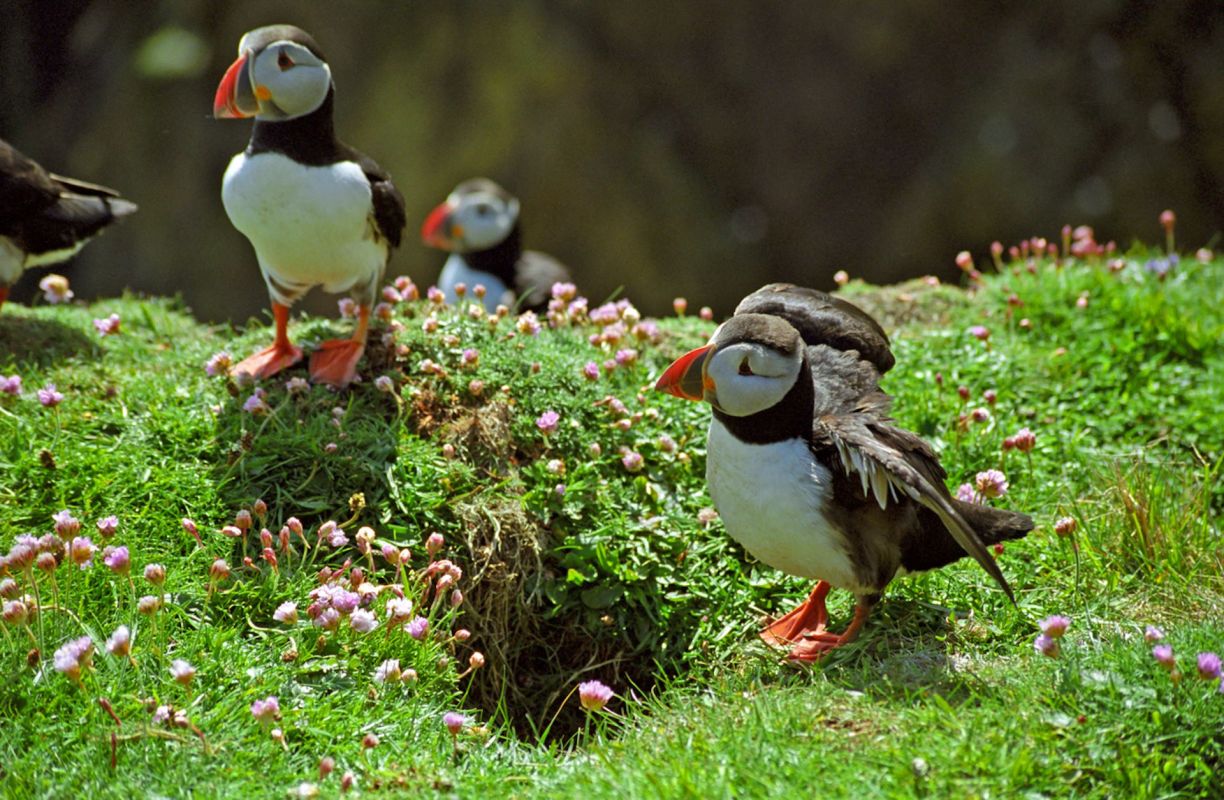The image of an Atlantic puffin is synonymous with the Canadian province of Newfoundland and Labrador. But volunteer rescuers made an unfortunate discovery when aiding puffin chicks this past summer, sparking concerns about what their findings could mean for the long-term health of the puffin and how human consumption is affecting the environment.
What happened?
As CBC detailed, it's not uncommon for the puffin chicks, also known as pufflings, to get confused by light pollution from humans and wander too far from their homes.
This past summer, however, rescuers of these pufflings noticed the chicks were not only smaller than normal — some less than half the normal size for their age — but also limited in number. This led to further investigation that revealed many of the pufflings had died.
"Just based on the body mass and just picking up the dead chicks, that were just skin and bones, so essentially they died of starvation," Sabina Wilhelm, a wildlife biologist with Environment and Climate Change Canada, said.
Why is this concerning?
Seabirds can be an indicator of how well an ecosystem is doing as a whole, and capelin, a type of fish that's typically between five and eight inches, is around 50% of a puffin's diet.
Unfortunately, warmer ocean temperatures can cause the capelin to move to cooler waters below and out of the reach of the puffins, while others have raised concerns that humans are mismanaging the harvesting of the fish for our own consumption.
"Why are we catching one of the main sources of food for just about everything in the water?" said former fisherman and current tour boat operator Joe O'Brien, who saw dead puffins floating on the water last summer.
Ian Jones, a marine bird biologist, shared those concerns.
"When I hear these claims that somehow you can keep fishing a forage fish like this ... it's incomprehensible to me," he said.
What can I do to help?
Overfishing is a major concern, with more than three billion people reliant on fish for protein. But making the commitment to shop and eat sustainably is one way to make your mark for the better.
There are many companies and organizations focused on providing seafood in a manner that also takes into account the long-term health of the fished species and our environment.
Additionally, making adjustments to your diet could ultimately help balance our ecosystem — and ocean temperatures — in the long term.
The farming of livestock is responsible for 14.5% of heat-trapping gases globally. Switching from a high-meat diet to a low-meat diet would eliminate thousands of pounds of harmful carbon pollution produced per person each year.
Join our free newsletter for cool news and cool tips that make it easy to help yourself while helping the planet.









